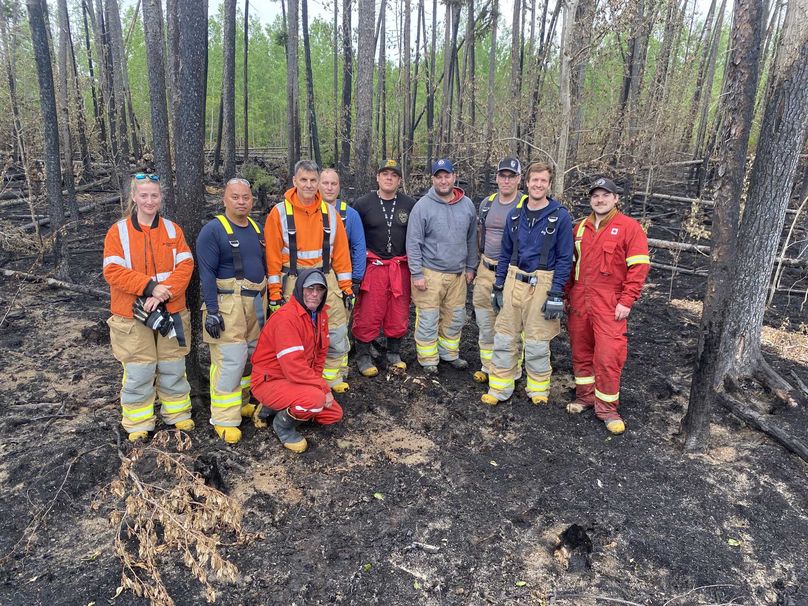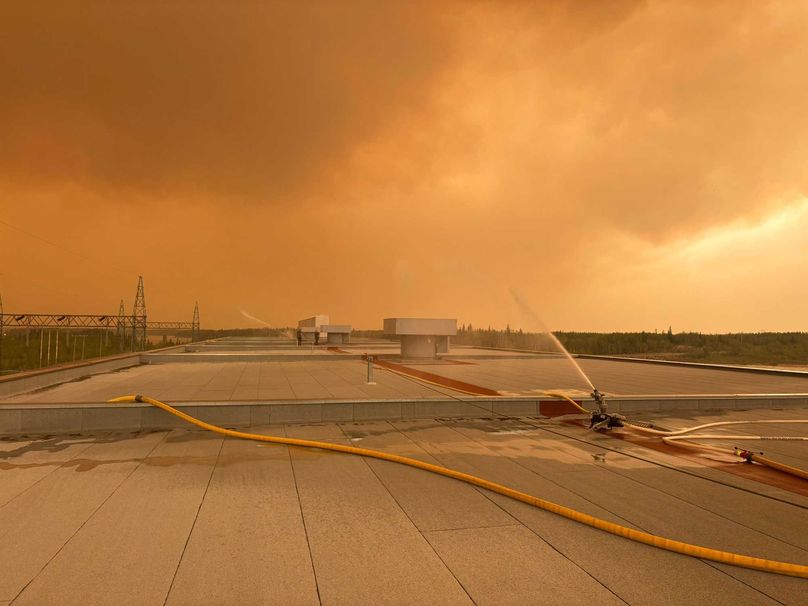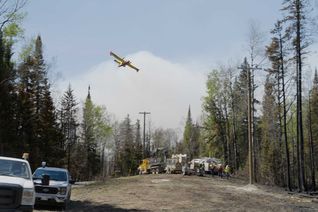
One of our ERC teams
Wetter, cooler weather has given our emergency response crews some respite after weeks of battling to protect staff and critical infrastructure from wildfires. Many remain out of control.
“These fires are moving faster than the information,” said Andrew Myers, Manitoba Hydro’s Deputy Fire Marshall and Emergency Response Officer, in a telephone interview from Thompson. Andrew directs logistics for ERCs deployed across Manitoba.
“Typically, when the temperatures drop at night the fires move slower, but this year there’s no humidity in the air so even with the cooler temperatures the fires are still moving in the evenings,” Andrew said.
During the current battle against wildfires, the emergency response crews’ efforts are split between putting out fires encroaching on our facilities and installing value protection – large water pumps, hoses and outdoor sprinklers that soak assets as big as a generating station powerhouse, or as small as a communication tower.

Value protection equipment spraying at Jenpeg Generating Station.
Enlarge image: Hoses spraying water on top of a generating station roof.
For the first time in history, in May some of our generating stations were temporarily evacuated due to the threat from wildfires. Emergency response crews were on hand to fight fires, move staff safely out of harm’s way, and set up value protection equipment to spray water on structures.
Safety is paramount. Our emergency response crews have protective clothing and gear, including respirators for working in smoky conditions, and know when it’s time to back off from a blaze or other hazard.
The four- or five-person emergency response crews usually travel by road, hauling the value protection gear in trailers. But with so many road closures this season the teams have often relied on “floatplanes and helicopters for the bulk of our movements,” said Andrew.
The emergency response crews’ work is done in close cooperation with the Manitoba Wildfire Service (MWS).
“They’re boots on the ground right in the face of a raging forest fire, hiking kilometers all day with an 80 pound pack of hose on their back with minimal sleep,” said crew member, Lance, in tribute to the MWS crews.
We have emergency response crews at every major generating station as well as converter stations, as well as a crew at the High Voltage Test Facility.
“Their day-to-day is to provide firefighting support for the station, hazardous materials response, medical response, basically anything a fire department does is what our crew does,” Andrew said.
“Emergency responders, we’re wired for this type of stuff, responding to these calls. It is physically demanding and mentally demanding, however everybody that responds typically rises to the challenge,” Andrew said.
With more than 180 employee volunteers, our emergency response crews make up the second-largest fire department in Manitoba after the City of Winnipeg Fire Paramedic Service.
Read more about how our emergency planning and response, and our crews in our Manitoba Hydro ESG Report 2023-24 (PDF, 9.9 MB).

Wildfire restoration in Nopiming Provincial Park
To learn more about the work we do after a wildfire, here’s a look at some of our restoration work in May at Nopiming Provincial Park.
Video: 2:29



